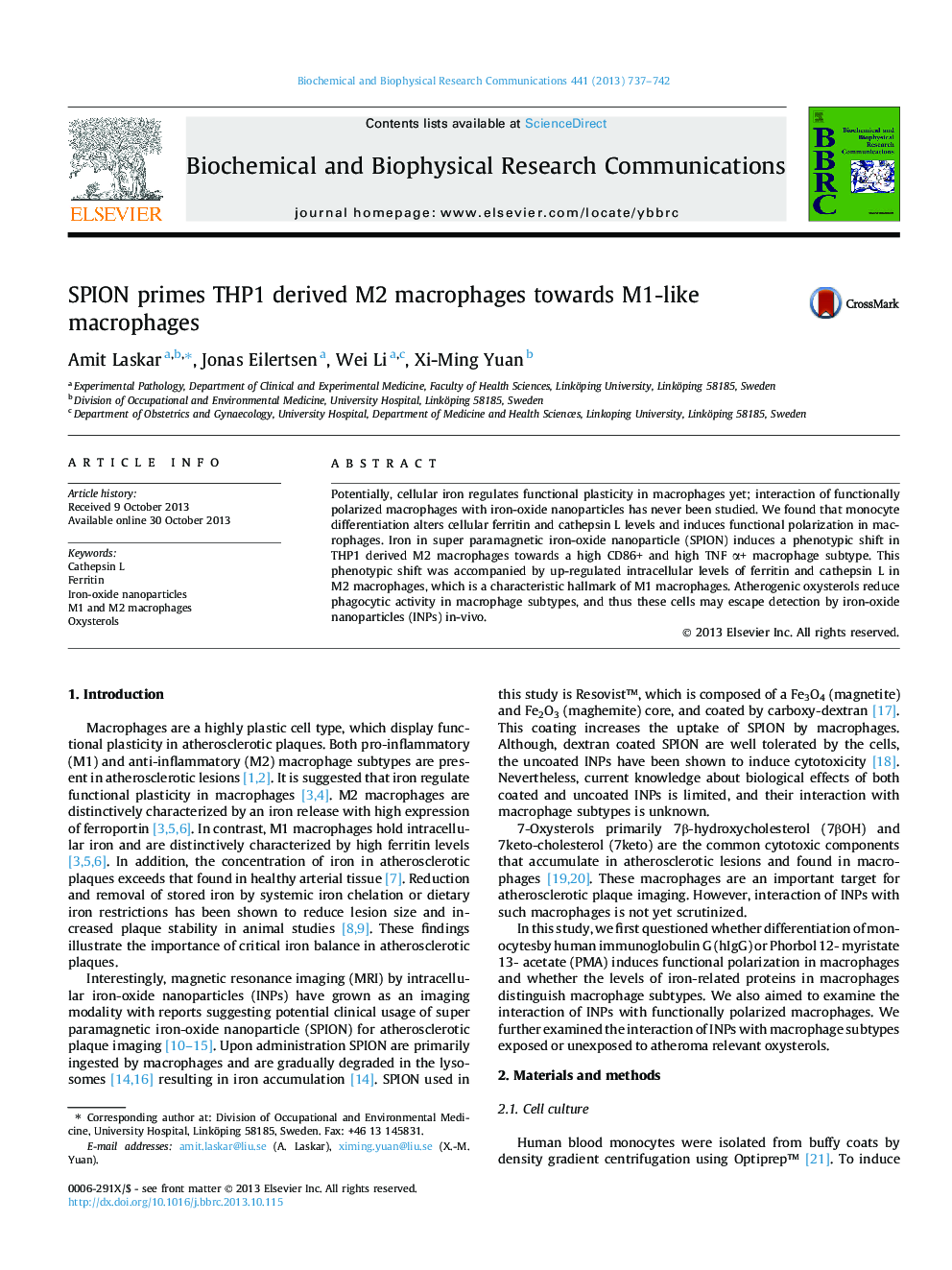| Article ID | Journal | Published Year | Pages | File Type |
|---|---|---|---|---|
| 10757549 | Biochemical and Biophysical Research Communications | 2013 | 6 Pages |
Abstract
Potentially, cellular iron regulates functional plasticity in macrophages yet; interaction of functionally polarized macrophages with iron-oxide nanoparticles has never been studied. We found that monocyte differentiation alters cellular ferritin and cathepsin L levels and induces functional polarization in macrophages. Iron in super paramagnetic iron-oxide nanoparticle (SPION) induces a phenotypic shift in THP1 derived M2 macrophages towards a high CD86+ and high TNF α+ macrophage subtype. This phenotypic shift was accompanied by up-regulated intracellular levels of ferritin and cathepsin L in M2 macrophages, which is a characteristic hallmark of M1 macrophages. Atherogenic oxysterols reduce phagocytic activity in macrophage subtypes, and thus these cells may escape detection by iron-oxide nanoparticles (INPs) in-vivo.
Related Topics
Life Sciences
Biochemistry, Genetics and Molecular Biology
Biochemistry
Authors
Amit Laskar, Jonas Eilertsen, Wei Li, Xi-Ming Yuan,
